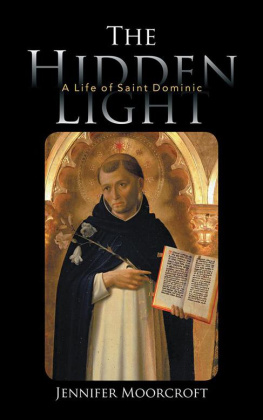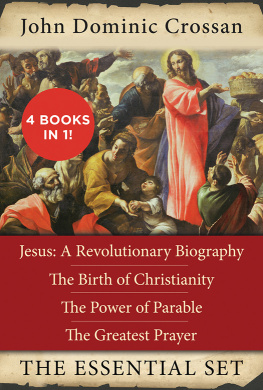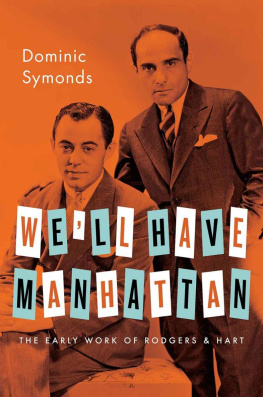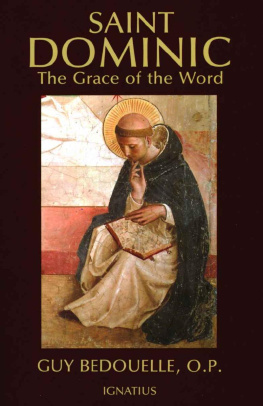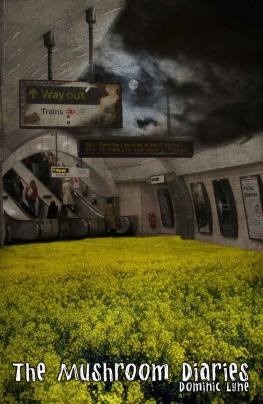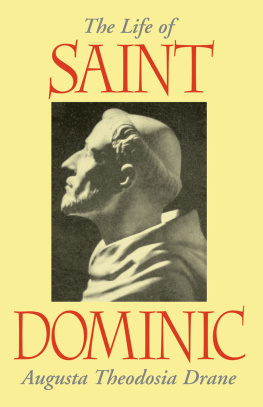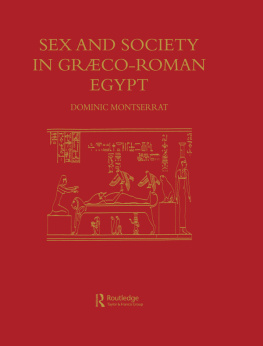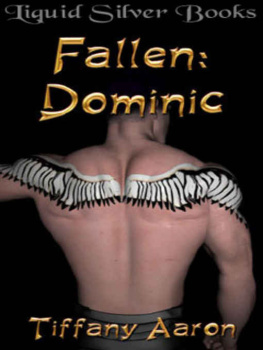THE
HIDDEN
LIGHT
A LIFE OF SAINT DOMINIC
JENNIFER MOORCROFT

AuthorHouse UK Ltd.
1663 Liberty Drive
Bloomington, IN 47403 USA
www.authorhouse.co.uk
Phone: 0800.197.4150
2013 by Jennifer Moorcroft. All rights reserved.
No part of this book may be reproduced, stored in a retrieval system, or transmitted by any means without the written permission of the author.
Published by AuthorHouse 10/29/2013
ISBN: 978-1-4918-8129-3 (sc)
ISBN: 978-1-4918-8130-9 (e)
Library of Congress Control Number: 2013918200
Any people depicted in stock imagery provided by Thinkstock are models, and such images are being used for illustrative purposes only.
Certain stock imagery Thinkstock.
Because of the dynamic nature of the Internet, any web addresses or links contained in this book may have changed since publication and may no longer be valid. The views expressed in this work are solely those of the author and do not necessarily reflect the views of the publisher, and the publisher hereby disclaims any responsibility for them.
CONTENTS
Saint Dominic has been described by one of his biographers, Guy Bedouelle OP,as hidden in the light. Unlike most other founders of religious orders, he says, we have only three brief letters and almost none of his words preserved.; we know nothing of Dominics life except what we can see through the eyes of his followers or his friends The fact that our access to St. Dominic is so indirect reveals his discretion and, in a sense, his detachment from himself. This detachment in turn is an eloquent statement of the place he wished to hold within the Church.
For the title of this book I have reversed that description somewhat to call Dominic the hidden light, because developments at this time have, in a sense, further hidden his light from our view. In the words of Michael Baigent, Dominic was a cruel and fanatical Spanish monk because of his association with the Spanish Inquisition and his persecution of the Cathars. Now the Catholic Church is not in the habit of canonising the cruel and fanatical, but only those who have exhibited heroic love of God and neighbour. Could Baigents description possibly be true?
I knew hardly anything of Dominic before I started writing this book, apart from that possible connection with the infamous Spanish Inquisition, and also the brief meeting he had with St. Francis of Assisi, in which the colourful personality of Francis rather overshadowed that of Dominic.
By contrast with that description of Dominic as cruel and fanatical, Lacordaire described Dominic thus:
Scarcely one ray falls on Dominics cappa, yet so pure and holy is he that this little light is in itself a brilliant witness. The light is hidden because the man of God is far from the noise and blood of the battle; because, faithful to his mission, he opens his mouth only to bless, his heart to pray, and his hand to work for love; and because virtue, when it stands alone, is lit only by the light of God.
These are the two conflicting descriptions of Dominic that I had before me as I set off on a journey to discover the real Dominic. There were other things I wanted to find out, too, because in many ways the challenges that Dominic faced in his day are very similar to those that Catholics face today. Since the discovery of the Gnostic writings at Nag Hammadi there has been an upsurge in interest in Gnosticism and its medieval development in Catharism. I wanted to find out how Dominic actually met the challenge of Catharism, and how we as Catholics can respond to the belief that the Gnostic writings are the true gospel in contrast to the Catholic proclamation of the Gospel.
Dominics Order of Preachers was founded at a time when the great universities of the western world were being founded, and his own Order attracted two of the greatest intellects, not only of his time, but of all time, St. Albert the Great and St. Thomas Aquinas. One of the challenges we face today is the conflict between faith and reason, and faith and science, that is one of the concerns of Pope Benedict XV1. Can we learn anything from them as to how to marry faith and reason today?
Then, both Pope John Paul 11 and Pope Benedict XV1 have identified relativism as one of the greatest challenges of our time; that is, the assertion that there is no ultimate truth and that therefore all truths are equal in valueapart, of course, apart from religious belief which is seen by some as being completely worthless. Dominic had the temerity to give his order as its motto, the single word Veritas, Truth. So can we still say that there is objective truth, and how would Dominic reply?
One last thing: there are many accounts of miraculous happenings in Dominics life. Are these to be seen as pious embellishments, or did they really happen? It must be up to each reader to make the judgment for himself. But the accounts of the miraculous events were recorded by the people who knew Dominic and lived with him, and who recorded the other events of his life, too. It may be wise not to dismiss them too easily. But even if they did not happen, they do tell something of the reverence in which he was held, and his closeness to God that instigated such embellishments; the miraculous does happen sometimes around those close to God, and also around those whom God calls to carry out some special mission in the life of the Church.
I was for some time fortunate in belonging to a parish that for many years has been served by Dominican sisters based in Bushey, England. I have seen in the lives of Sister Anthony and Sister Clare, of Sister Alphonsus and Sister Loretta, the charism of the Order of Preachers being lived out today. I want to dedicate this book to them, and with gratitude to the Bushey community who kindly lent me material to help me in my researches.
Legend recounts that the noble lady, Joanna of Aza, had a dream before the birth of her third son. In it she dreamt she was carrying, instead of a baby, a dog or hound that, when born, bounded away from her with a lighted torch in its mouth that would set the world on fire. It was a prophetic dream, or perhaps a later, evocative understanding, of his name, Dominic, Domini canem, the hound of God, and accurately reflected his God-given calling. Like his Master, the Hound of Heaven, Dominic would be on fire with the love of souls that he would pursue, by his prayers, his sacrifices, his love and his zeal, down the highways and byways of the world.
Birth
Dominic was born in the little village of Caleruega, some twenty miles from the city of Osma in Old Castile, Spain about the year 1170. It was a small and dusty village, but possessed of a special quality of light and clarity in the air, a fitting birthplace, then, of one who always sought the clarity and light of truth. At his baptism his mother witnessed another marvel, a bright star resting on his forehead. This, too, was prophetic, because those who knew him testify to the radiance of his face and its expressiveness.
He was the third son, with Antonio the eldest, followed by Manes and was named Dominic after Saint Dominic of Silo, the patron saint of expectant mothers, with a Benedictine abbey dedicated to him a few miles from Caleruega.
Saintly Parents
His father, Felix Guzman was, like his mother, of noble birth, but it was far more the nobility of their characters that shaped Dominics early life. Felix was esteemed by the whole village for his Christian devotion. He probably died young, for not much is known about him. From their mother, Joanna, all three boys learnt compassion, respect and concern for the poor, to whom their house and their purse were always open. It is related that, one day when her husband was away on business, Joanna, having nothing else to give to poor and needy villagers, gave away a large jar of wine. On her husbands return, some of the villagers secretly told him what she had done, and when he reached home he asked for wine. Joanna went to the cellar and knelt before the empty jar and prayed. She had already discerned the exceptional holiness of her youngest son, and so asked the Lord, through his merits, to work a miracle. He did so; rising and examining the jar, Joanna found the jar full of wine, which served not only her husband but the whole household. Such was her holiness that she was beatified by Pope Leo X11. Of her other two sons, Antonio became a secular priest, and as the heir to the Guzman wealth, distributed it to the poor and spent his life ministering to the sick in a hospice near the village. Mannes would follow Dominic into the Order his brother founded, and was beatified by Gregory XV1. Such were the fruits of the example of holy living their parents gave them.
Next page
